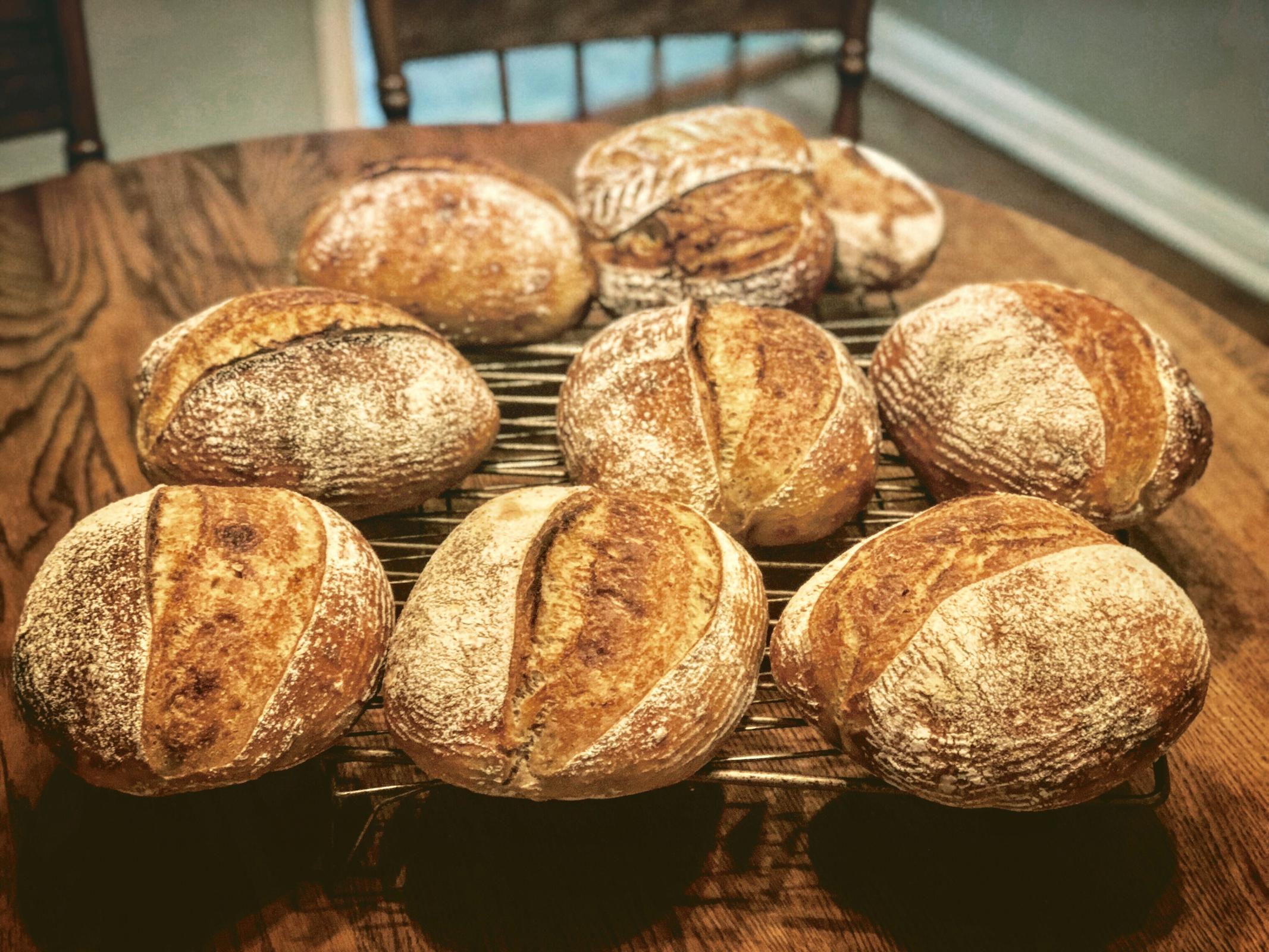Apparently, these are inspired by Ian aka the King of Buns as referred to by dabrownman. As I can never allow myself to follow a recipe exactly, of course I have changed things up to show my own character. Unlike Ian, who blended the cream cheese with the dough, I put in chunks of cream cheese. Also, candied orange peels and sunflower seeds are incorporated to make the rolls more interesting. Rye flours are usually used along with orange and earl grey, yet to break the tradition, I chose to use barley flour (which resembles more of Ian’s rolls as well).

Earl grey cream cheese rolls with orange and sunflower seeds
Dough flour:
90g 30% Freshly milled pearl barley flour
75g 25% Whole spelt flour
75g 25% Whole red wheat flour
60g 20% Freshly milled sprouted white wheat flour
For leaven:
10g 3.3% Starter
13g 4.3% Bran shifted out from dough flour
13g 4.3% Water
For dough:
287g 95.7% Dough flour excluding bran for leaven
207g 68.9% Water
52g 17.3% Whey
36g 12% Leaven
9g 3% Vital Wheat Gluten
5g 1.7% Salt
1g 0.33% Ground earl grey tea leaves
Add-ins:
90g 30% Cream cheese (I used 1/3 less fat)
30g 10% Toasted sunflower seeds
21g 7% Candied orange peels
___________
215g 70.5% Whole grain
277g 90.8% Total hydration
Shift out the coarse bran from the dough flour, reserve 13g for leaven. Mix the rest back into the dough flour or soak them in equal amount of whey taken from dough ingredients for a minimum of 4 hours.
Combine all leaven ingredients and let sit until doubled, about 6-8 hours. Soak the candied orange peel in a little hot water to rehydrate.
Freeze the cream cheese for 1 hour. Cut into cubes and return to the freezer until needed.
Reserve 10g of the liquid and roughly combine all dough ingredients except for the leaven and salt. Autolyse for 30 minutes. Combine the reserved liquid with the leaven. Knead it into the dough along with the salt. Let it ferment for 10 hours.
Fold in the sunflower seeds and orange peels and let the dough rest for 20 minutes. Divide the dough into 6 equal portions. Fold the frozen cream cheese into the dough and shape them tightly into tiny boules. Leave it on the counter for 1 hour or until fully proofed. At the same time, preheat the oven at 250°C/480°F and pre-steam at the last ten minutes.
Score the dough and bake at 250°C/480°F with steam for 10 minutes then without steam for 15 minutes more or until the internal temperature reaches a minimum of 205°F. Let cool for 1 hour before serving.

These rolls have chewy and moist crumb but a crispy crust when toasted. The crumb is not very open probably due to over-proofing (the oven was occupied so I couldn’t heat it up in time for the rolls!) but acceptable to me for rolls.

I adore the taste of these rolls! They taste mildly sweet thanks to barley, spelt and sprouted white wheat. Cream cheese, orange, sunflower and earl grey are such a killer combo! You get sweetness from cream cheese and orange, tanginess from cream cheese, toasty nuttiness from the sunflower seeds and whatever aromatic scent from the earl grey.
Thanks Ian for inspiring such delicious rolls!


















